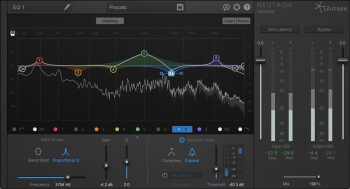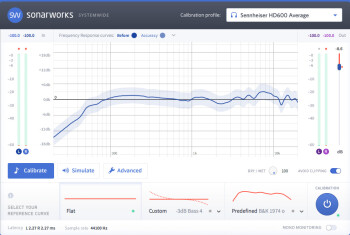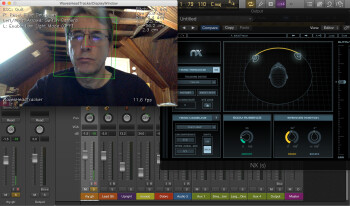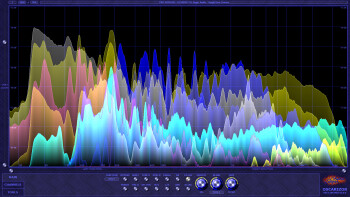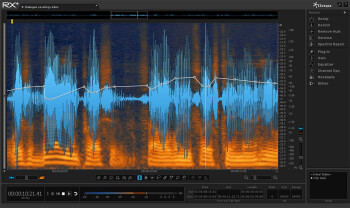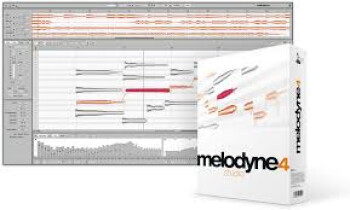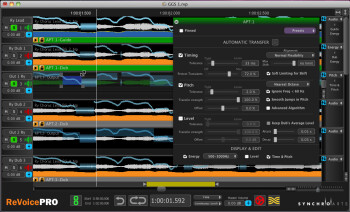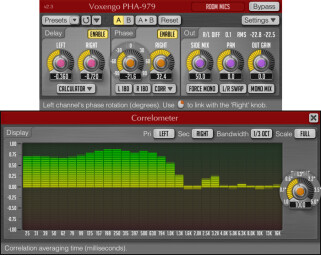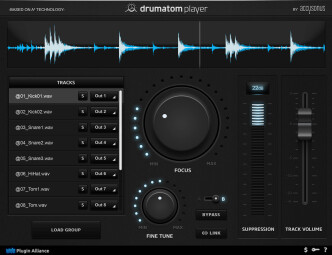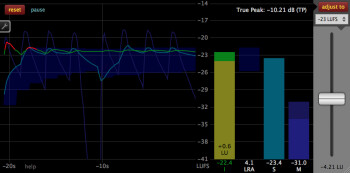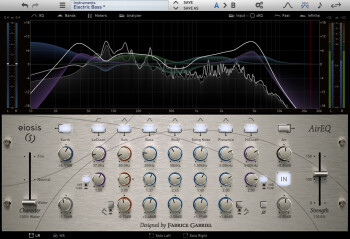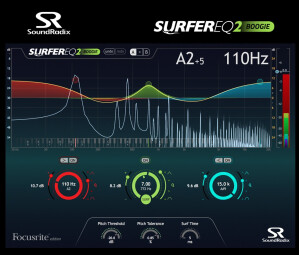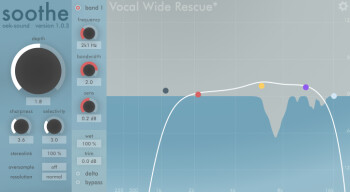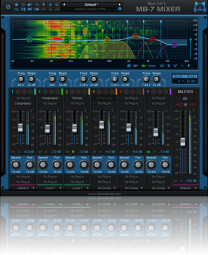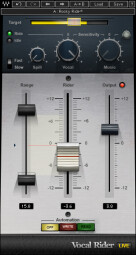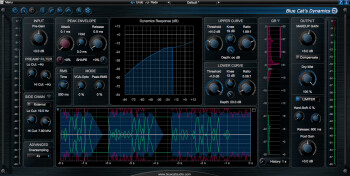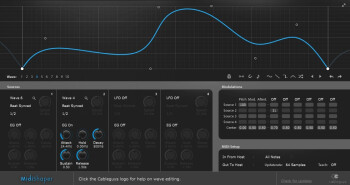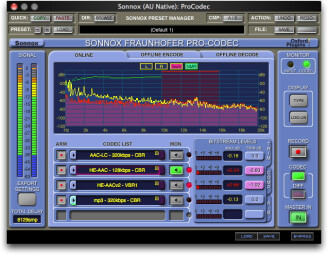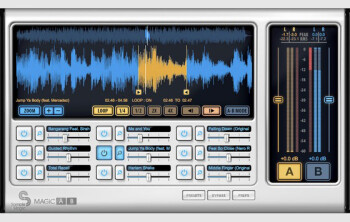From the first editing click to the last automation, mixing is a passionate and arduous job. That's why we decided to write this article to discuss some tools that can make your life much easier and/or expand your horizons.

By no means do we intend to list all tools susceptible of being used during music production, but rather those that offer original and innovative functions to solve specific problems or to increase your productivity. We will not discuss here the umpteenth emulation of an LA2A, an 1176, a Pultec, or a Lexicon reverb, but rather truly groundbreaking effects, processors and tools.
In this regard, it’s hard not to start by mentioning Izotope’s Neutron, whose ambition clearly responds to the questions raised in this article. It’s much more than a super-channel strip featuring a dynamic EQ, two compressors, an exciter, and a transient processor (all multiband). It also includes a limiter which uses artificial intelligence to suggest settings depending on the context: the software “listens” to your tracks end then suggests presets it considers most adequate. And apart from this very interesting function, even if it doesn’t always hit the mark, the software also includes some other nifty features that will help you gain some time, like a masking zones visualizer that detects the busiest frequency ranges and a system that couples EQing between tracks. In short a uniquely modern approach that can be used with Windows or Mac and is available in VST, AU, RTAS, and AAX format with a price ranging from $250 to $350, depending on the version.
As cool as that sounds, there are many other tools out there by other software makers that are just as interesting. And since you can’t do a good mix without a good monitoring system, let’s start off looking at what you can find in this department…
Improving your audio system
You won’t get too far without a reliable monitoring system. Hence, your headphones or speakers are the first stage in the chain you need to pamper. We won’t go into speaker choices or the acoustic treatment of your room, but rather some tools that can help you improve your monitoring system significantly.
Room acoustics correction
The best place to mix music is one whose acoustics have been treated to provide the most balanced and homogeneous sound. Nevertheless, when you don’t have access to such a place and you have to work in a room where the sound gets distorted, there are some software programs that can help you improve this situation. After taking some measures with a dedicated mic, these programs apply a different EQing to each speaker with the goal of compensating the defects of the room to achieve a linear result. While IK Multimedia was one of the first companies to bring a software with ARC into the market and there are nowadays several hardware solutions out there, when it comes to software, Sonarworks seems to be the brand offering the most attractive solution right now. Apart from a well-conceived calibrating system, it’s the only one that provides a virtual driver which allows you to use the correction without the need of a DAW or a host plug-in. It comes in VST, AU, RTAS, and AAX format for Mac and PC.
Correcting the frequency response of your headphones
Sonarworks, once again, provides a way to correct the frequency response and left/right balance of your cans with a single plug-in. And this is by no means a minor thing, considering that the frequency response of headphones is much less linear than that of speakers, and even on very expensive models you can hear significant differences between the left and right ear cups. The plug-in allows you to correct this based on mean curves included for the most popular headphones models, or based on the response curve of your own cans, which you need to send in for them to be calibrated. Also note that the company sells pre-calibrated headphones.
Less expensive but also less comprehensive than a measuring system is the Toneboosters TB Morphit. An alternative definitely worth checking out, considering it sells for only 30€ and that it’s available in AU and VST formats for both Mac and Windows.
Emulating speakers on headphones
Everybody knows you shouldn’t mix with headphones because they don’t provide a natural spatialization of sounds (reproduction is not truly binaural)… but everybody does! Be it out of convenience or because, in the end, most people will end up listening to music with headphones. So, to achieve that, the best thing to do would be to get a plug-in that can simulate playback through a pair of speakers. The principle behind these tools is very simple: put some of the right channel in the left one and vice versa, while at the same time sprinkling everything with a room emulation. Many more or less expensive and complex plug-ins offer this possibility. Among the most comprehensive ones is the Waves NX. Capable of handling several headphones, this plug-in takes into consideration the actual head of the listener, be it using your webcam or with a sensor you have to put on your headphones.
And they are not the only ones doing this. There are other more or less expensive brands offering the same, like G-Sonique with the Monitor MSX5 (VST, Windows only; 46 euros), 112db with the Redline Monitor (VST, AU and AAX for Windows and Mac; 70€), or even ToneBooster with its TB Isone 3 (VST & AU for Windows and Mac; 20€).
Protect your ears
Your ears are the most precious belonging you have, and your monitors are the most expensive thing you have: two good reasons to protect both of them with Cerberus Audio’s Ice9, an AU and VST plug-in for Mac and PC which you simply need to put at the end of your DAW’s Master bus. What for? To stop sound from exceeding a given threshold (that you have preferably set beforehand) with the intention of avoiding tinnitus due to an unfortunate feedback or digital distortion. In short, indispensable for tracking and all the way to mastering because you can never be too cautious.
Train your ears
This is a somewhat different kind of software: it’s goal is to help you develop your listening capabilities. Conceived as a training tool for sound engineers, TrainYourEars EQ Edition 2 is based on the principle of note-recognition software but applied to frequency recognition. With a very nice GUI, this software (available for Mac & Windows) guarantees quick progress concerning the most crucial factor for your mixes: your ears. And if Bob Katz himself says it’s good…
In the same genre, but less expensive, you have the Auricula Software plug-ins or even the very nice SoundGym online system, which costs $15 per month or $120$ for the entire year.
Analyzing and visualizing
As much as we like to say that you shouldn’t mix with your eyes, visualizers and analyzing tools can prove very useful during mixdown. Especially when you have to make do with the limitations of your monitoring system: it’s impossible to know what’s going on in the low end with 5" speakers. Here is a selection of plug-ins that will help your ears see!
Visualizing several tracks at the same time
While Nugen Audio, Blue Cat, Flux, and even Izotope offer some great visualizing tools, home studio owners shouldn’t neglect the excellent Oscarizor Pro that goes for 45 euros, providing three serious visualization solutions in 2D or 3D, with the possibility of displaying the frequency response, the waveform or the stereo image of 10 tracks simultaneously. For the price, you would be crazy not to try it, especially since it can handle M/S and surround, besides featuring tons of options to adjust the visualization and that it’s available for Mac and PC in VST, AU and AAX formats. A no brainer? Yes, it is!
But don’t forget MeldaProduction’s MMultiAnalyzer (sonogram included), Schwa’s Schope, HOFA’s IQ-Analyser or even the one offered by Blue Cat. And there’s also the Voxengo GlissEQ and DDMF IIEQ Pro which allow you to compare several response curves at the same time.
Detecting the key of a song
Whether you need to mix two loops, program something or tune a drum kit, knowing the chords used in a song can be very useful. That’s the idea behind Hornet Audio’s SongKey Mk2 which detects chords in real time. It’s just 10 bucks and available in AU, VST, RTAS, and AAX format for Mac and PC.
Improving track quality and simplifying editing
Restoring tracks
The idea here is to correct the defects of mediocre or mistreated signals, which is something pretty common in music production. From distorted signals to hum, bleed, phase issues, or encoding issues, there’s always something to sort our during editing and mixdown.
Well aware of that, Izotope offers the RX 6 with different modules to overcome almost any situation with the help of a spectral editor and modules for specific tasks, like a background noise suppressor, a wind suppressor, mic scraping, mouth noises, plosives, bleed, distortion, etc. Initially conceived for post-production, the software has been widely adopted in the music production world – Michael Brauer, for instance, wanted to award the Peace Nobel Prize to the software maker for it – so even the most comprehensive version that sells for $1500 doesn’t seem that expensive, given the services it provides. The entry-level version of the RX is only $130, while the Standard version costs $400, which seems to be the best value for money for most musicians.
Adjusting note pitch and placement
There is clearly a before and after Autotune in the audio production world and while it still remains a safe bet when it comes to adjusting intonation issues (or even make special effects), it seems that Celemony’s Melodyne has won the upper hand in the genre as of lately. Not only can it play with audio as if it were playdough, allowing you to transpose and displace notes, as well as tinker with their formants, vibrato and volume envelope, but it can do that with polyphonic sources! It’s actually the first mass-market product that allowed demixing, and it remains the only one that does it right, especially since it keeps on integrating more and more with all sorts of DAWs. Ranging from 100€ to 650€ depending on the version, the plug-in comes in AU, VST, RTAS, AAX, ReWire, and ARA format for Mac or PC.
Automating note syncing
When talking about editing note pitch and placement, it’s impossible to ignore SynchroArts’ VocAlign Pro 4 and Revoice Pro 3, two software programs that allow you to perfectly sync several tracks using time stretching and pitch shifting algorithms. The time they spare you is huge when you’re working with choirs or unisons and are definitely worth the 400–600€ asked by the company, depending on the version. Particularly since you can use the software for other purposes: doubling, resyncing voices to picture, etc.
Automating track syncing and solving phase issues
Sometimes the tracks of a song can be slightly out of sync due to clock or export issues, which result in phase or comb filtering. To put a remedy to that you have Advanced AudioWave’s Track Align Pro, Sound Radix’s Auto Align or MeldaProduction’s MAutoAlign whose role is to sync tracks to perfection.
While there are lots of other tools to solve this phase issues, like the Voxengo PHA-979 ($70 in AU & VST for Mac and Windows) or Universal Audio’s Little Labs IBP (100€ in UAD format for Mac and PC), it’s still Sound Radix’s Pi you might want to come to if you need more than just syncing tracks, since it can also detect and resolve phase issues when summing the different tracks of a song.
Suppressinig mic bleed
The problem with mics is that they record anything that their capsules can capture, not only what you want them to. This is particularly troublesome when recording drums with 10 different mics. And while the use of Noise Gates and transient processors can prove helpful to improve things, sometimes they are just not enough to get a satisfying result. That’s why Accusonus created Drumatom, whose goal is to help you attenuate significantly the bleed from the different drum tracks.
Harmonizing track levels
Those of you who follow Nantho’s article series on mixing know that the first step in the mixing process is to harmonize the gain of the different tracks making up the song. While there are many software VU-meters to do that manually (especially the excellent Klanghelm VUMT), Klangfreund’s LUFS Meter provides the advantage of automating the entire process for you. This can spare you lots of time, especially when dealing with projects that have 30 or 40 tracks. Available in AAX, AU and VST format for Mac and Windows, this small plug-in ought to be placed as an insert on every track. You will only need to sync all instances with a simple click so that every track gets adjusted automatically to the selected LUFS. Brilliant.
Simplifiying EQ
There are lots of formidable EQs on the market, both software and hardware, and with more or less character of their own. Some companies strive to offer the best usability, like Fabfilter or DMG Audio.
But only a few can boast of having such an intelligent interface as that of Eiosis’ AirEQ Premium. Rather than talking only technical jargon in kilohertz and such, it also speaks a language that is more easily understandable by musicians: body, presence, air, or sub, with the names changing according to the preset. It’s certainly a linguistic revolution but not only that, it also allows you to change the character of the EQ or its strength (from 0% to 150%) with a simple slider. It sounds truly excellent and costs only $150. It’s available for Mac and PC in VST, AU, and AAX format. Read our review here.
Even more original is Sound Radix’s SurferEQ which handles EQing in terms of notes rather than frequency ranges. When you boost or attenuate you actually modify the overtones making up the note. A brilliant idea that can work wonders together with a standard EQ. It goes for $200 and is available for Mac and PC in VST, AU and AAX format.
Much more than an EQ in every sense of the word is Sonible’s Frei:raum, which is a three-in-one plug-in combining an intelligent EQ, a “de-reverberator” and a transient processor. For its intelligence to work you need to let the plug-in “hear” a specific band for it to suggest any adequate corrections. The plug-in is available in VST, AU and AAX format for Mac and PC with a price tag of €280, but you can buy each module separately for 130€. Here you can read more about it.
One of the main uses of an EQ is to do away with those frequencies that produce truly ungraceful resonances within the mix. While the issue is not too complicated to solve, it can be really annoying, which is why Oek-sound conceived Soothe, a dynamic EQ that guarantees detecting the issue and providing solutions. Available in VST, AU and AAX format for Mac and Windows for 150€, the software is really effective and can prove very useful beyond the treatment of resonances (particularly for de-essing). More info here.
And to close this section on EQs, the great Waves’ Q-Clone plug-in that allows you to capture the EQing curve of a hardware EQ to reproduce it afterwards at will. For Mac, PC in the usual formats it sells for… a different price every week, because Waves has special offers every other day!
M/S and multiband processors
Multiband for everyone
Not everybody has the chance to work with Reaper and Studio One and be able to split the signal at one’s will. But everybody does have the possibility to get Blue Cat’s MB-7 Mixer: a plug-in that allows you to split the signal in seven configurable bands. And which, on top, gives you full control over the latter, from visualization to automation, including panning and processing, each band being susceptible of going through four VST plug-ins. In other words, the possibilities are numerous and go well beyond compression and multiband distortion, especially since MIDI is also on board, as is usually the case with the brand’s products.
M/S for everyone
If you want to do Mid/Side without a sweat, Audio Vitamins is the way to go: their Msg plug-in available in AU/VST/AAX format is capable of hosting other VST/AU plug-ins which, thanks to it, process the signal in Mid/Side. For 28€, it would be a pity not to have it…
Simplifying automation and control
The key to a dynamic mix that doesn’t get boring and where everything is perfectly intelligible at all times is good ol’ automation. The problem is that not everybody has a MIDI control surface to make that in an intuitive way, which has resulted in the introduction of diverse solutions to allow users to create these famous automation curves.
Generating an automation track for the vocals or bass
Compressors are a great tool to work the dynamics of a signal, but they haven’t stopped many great sound engineers from continuously adjusting the level of a track by hand, always keeping a finger on the volume faders of the console. Halfway between this approach and the compressor’s principle, Vocal Rider and Bass Rider (inspired on Wave Rider) allow you to automatically record automation curves for vocal or bass tracks according to previously established settings. Obviously the algorithm will never match the work made by a human, but it will allow you to get an automation curve that will serve as a good editable basis to manage better the level of a track, sparing you the coloration and artifacts that the use of a compressor might imply. Consider between $200 and $300, depending on the format (RTAS, AU, VST, and AAX for Mac and Windows).
Along th same lines, you might wanna consider taking a look at the Quiet Art Wave Rider 3 and HoRNet Autogain Pro.
Generating MIDI data from the signal’s amplitude
One of the main strengths of Blue Cat Audio’s products is their ability to generate MIDI data depending on the audio signal passing through them. Consequently, is it very easy to get this data to control any plug-in afterwards, like a compressor, obviously, but also the cutoff frequency or resonance of a filter, the amount of reverb, or the gain of a distortion. The possibilities are endless… You might also want to take a look at the DP Meter Pro for 100€ (VST, AU, RTAS, AAX & DirectX for Mac and PC) or the outstanding Dynamics that sells for 150€.
Unifying plug-in control
Blue Cat’s Remote Control, which sells for 50€, boasts about being the only interface that can manage different plug-ins. There’s some work involved beforehand, true, but once the mapping’s done you can control up to 64 MIDI parameters with one single interface. It will clear your mind to concentrate on what’s truly important: the sound.
Handling automation
While all DAWs allow you to draw automation curves, we must admit that none offers such a well-accomplished tool as Cableguys’ MidiShaper. It is capable of drawing the most complex curves, define their periodicity and assign them to any MIDI controller, be it pan, volume or a synth parameter. All that for only 24€ in VST and AU formats for Mac and Windows. In the same genre, you can also opt for its major competitor Xfer’s LFOTool ($50).
Verifying your mix
Emulating different monitoring systems
Apart from analyzing and comparison tools, there’s nothing better to check a mix than testing it on different monitoring systems – as mediocre as they might be – to make sure it will sound fine in any situation. That’s exactly what the Audified MixChecker proposes, emulating different types of speakers, allowing you to switch between them with a single click. Although I’m not sure it’s worth the 150 euros asked for it when you can certainly find free impulse responses that do the same thing. Here’s a video review. Anyway, in the same genre, another interesting option is the BeyerDynamic Virtual Studio freeware which provides 4 different emulations for headphones.
Examining the different aspects of a mix
Less ambitious but definitely more useful, G-Sonique’s Audio Control AC1 brings together on one single interface a set of tools and visualizers aimed at listening to all the details of your mix: by frequency band, LR or MS, filtering transients, etc. Not bad at all for 22€, although it’s only available for Windows as VST.
Making sure your mixes or masters are MP3-friendly
At a time when the digitization of music is rampant, most of the 24-bit/96 kHz mixes you spend hours fine tuning will end up in an MP3 player, with an encoding that can vary from the worst to the best. So, in order to anticipate this inevitable fact while you’re mixing, you can simulate different destructive audio encodings (MP3, AAC, etc.) with the 490€ Fraunhofer Pro-Codec plug-in. An excellent idea that will not only be useful to musicians, but also to broadcast producers who want to avoid ugly surprises when watching their projects on YouTube – the go-to place to listen music online for many, and which doesn’t provide any audio encoding options nor does it handle well lossless formats
Comparing mixes and masters
Auditory memory is very volatile and it’s sometimes very hard to put your work into perspective. Yet, it’s crucial to confront your mixes with one or two reference songs to assess whether they are well-balanced or if you made the right decisions. If you still need to find the right songs (you should consider enough songs, so you always have a comparison source, whose production you like), rather than using a regular audio player, Samplemagic’s Magic AB can come in really handy. Available as an AU, VST, RTAS, and AAX plug-in for Mac OS X and Windows 32 or 64-bit, it allows you to not only load and adjust the level of the different songs, between which you can switch with a single click, but it also provides markers, loops and visualization tools to make your life easier and your analyses more detailed. In short, a must-have for 60 euros. Although Reaktor users might prefer Ghostwave Audio’s MixRight, which is better on visualizations and less so on playback features, but way less expensive (10 bucks)…
And a couple more plug-ins
Taking notes about your project
Taking notes is far from being a luxury when you are mixing or mastering a song, which doesn’t keep certain sequencers from being devoid of any such feature. But that can be solved with MeldaProduction’s MNotepad plug-in, which can be inserted into any track to make sure that none of the important details get lost and are saved together with the project.
Online storage of your Recall Sheets
Based on a subscription model starting from 6.65€ per month, Teaboy allows you to store your studio notes to recall any hardware settings during a session (it provides more than a thousand Recall Sheets). If you only use plug-ins, you probably couldn’t care less, but if you use outboard gear and analog effects this studio dropbox will most probably catch your attention.
Don’t forget to take a pause
Considering that our job requires a good hearing, a lot of concentration and the ability to assess things, mixing can be as demanding to the brain as it is to the ears. Within this context, it is not only advisable to take breaks from time to time, it is absolutely necessary to give your eardrums and your eyes some rest, as well as to relax yourself and let serendipity play its part. In the wake of the Pomodoro technique, and considering that the relativity of time often makes two hours seem like ten minutes, a small tool that reminds you to take a break in regular intervals won’t hurt. There are lots of solutions on the market, one of the best known being Workrave for Windows and Linux. For Mac, we have Dejal’s Time Out, but there are lots of other apps in Apple’s App Store and Google’s Android Store and Chrome Web Store. There are even extensions for Firefox that you can find searching for “Timer, ” “Break Timer” and even “Pomodoro.”


